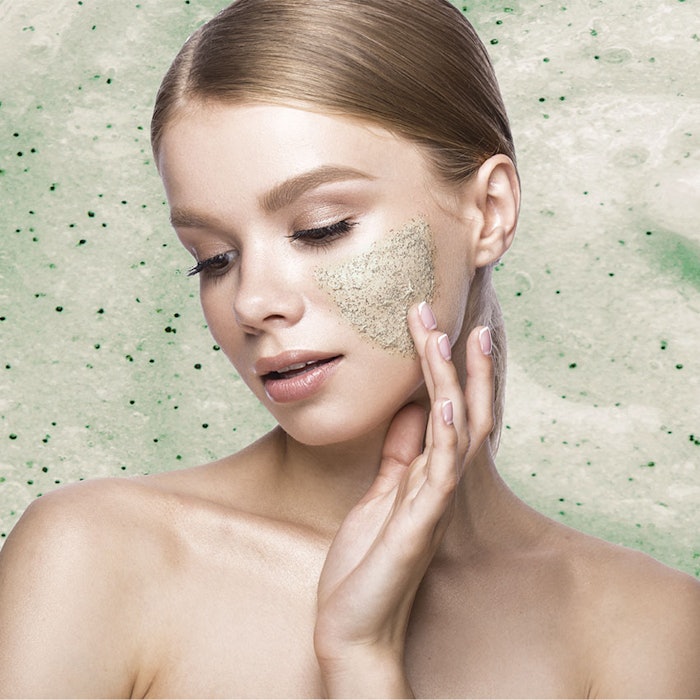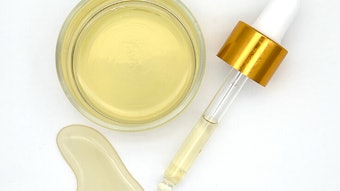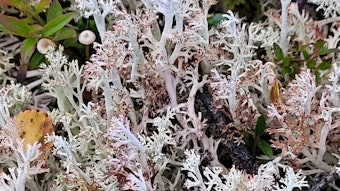
We live in a time when our oceans are littered with plastics. According to the literature, as much as three times more plastic than fish may be in our oceans by 2050.1–4 Microfine plastic particles find their way back via wastewater to the sea and into our food chain. This occurs because, with a size of less than 5 mm, the particles are too small for effective removal by wastewater treatment plants. They are almost non-biodegradable and can be harmful to marine life.
The hazard potential of microplastics is mainly characterized by the following concerns. First, microplastics can attract environmental toxins due to their surface characteristics. Throughout their lifetime, plastic particles’ surfaces become rougher, potentially acting as magnets for other harmful substances present in the environment.5 If these toxins and microplastic particles are ingested by sea organisms and released into their gastro-intestinal systems, the organisms may experience negative effects such as tissue changes, inflammatory reactions, toxicological impacts, internal injuries and even death.6 Secondly, the morphological characteristics of the particles themselves may pose threats.7
Based on these risks and consumer concern, the use of microplastic particles, i.e., microbeads, in personal care products has been prohibited in the United States as of January 2018. The British government also banned personal care products containing microplastics as of January 2018, and several additional countries in the EU are discussing similar bans.
While efforts are being made to phase them out, microplastics are still used in some cosmetic products; most commonly exfoliants. As soft abrasives, these formulas help to remove dead skin cells and stimulate blood circulation. In addition, microplastics are used in some countries as abrasive particles for dental care.8
It is true that cosmetics represent a small source of primary and secondary microplastics in the environment, compared with other sources. One report showed 4,300 tons of microplastic particles were used in EU personal care products in 2012.9 However, it is a source that could easily be avoided using natural or biodegradable alternatives.
Yet, there are still significant scientific challenges to finding replacements for microplastic particles. Alternatives must satisfy requirements for cleansing effects but also be biodegradable and available at moderate costs. Several attempts have been made to replace plastic microbeads using natural particles such as hydrogenated waxes, silica, sugar, salt and crushed plant stones or nut shells.10 However, their scientific features and effects have room for improvement.
As such, described herein is a research project to identify a natural, biodegradable alternative with good efficacy. The first objective was to define the criteria for the desired characteristics, to produce optimal replacements for specific microplastic particles. This included finding the ideal size, shape, hardness and surface morphologies, to obtain the desired characteristics without causing skin irritation.
From this information, biodegradable cellulose particles were derived from various sources and modified using a milling and grinding technology. Their microstructures were analyzed, and their abrasion and cleaning effects were tested for applicability in facial exfoliants and toothpastes. This article presents the results of these tests in relation to facial exfoliants.
Material and Methods
Natural cellulose and reference particles: Generally, the cellulose particles used in this studya-c were made from organic and renewable raw materials. Natural cellulose particles vary in terms of their particle shape and size, which enables different functionalities in line with the specific targets of cosmetic applications. Cellulose from different natural sources was tested, including beecha, oatb and wheatc. Reference particles including silica and polyethylene were used for comparison.
Exfoliant formulas: In vitro measurements for abrasion and cleansing effects were performed with a water-based exfoliant formula (see Formula 1). As noted, cellulose particles were compared with polyethylene and standard silica abrasives in identical formulations, each including a different particle at 3%. Two market references containing polyethylene and silica also were used as benchmarks.
Morphological characterization of cellulose particles: Characterization of the particles was carried out by scanning electron microscopy (SEM)d. To avoid charging effects, the particles were coated with an ultra-thin platinum film by magnetron sputtering.
There are still significant scientific challenges to finding replacements for microplastic particles.
Validation of biodegradability: Biodegradability was verified according to DIN EN 14851 under fresh water conditions. This is accomplished by determining the ultimate aerobic biodegradability in an aqueous medium by measuring the oxygen demand in a closed respirometer. Cellulose particles were tested in comparison with polyethylene beads and standard silica of similar particle sizes and shapes. Silica was included as a reference as it became established as one of the most-used natural alternatives to polyethylene in exfoliants.
Abrasion and cleansing efficacy tests: Tests to determine abrasion and cleansing efficacy were performed in a brushing simulatore at a pressure of 150 g with a 1 cm hub. Mechanical abrasion was evaluated on a glass substrate (25 × 25 mm2) coated with a 1-µm layer of chrome. This coating was deemed to be the most reproducible variant in pre-tests. The substrates were fixed on a sample holder (75 × 25 mm2) by double-sided adhesive tape.
Before brushing, the coating was briefly wetted with water under standardized conditions.One gram of the exfoliant formulation was applied to the sample holder. The slurry was renewed after 30 min. The brushing unite was equipped with a silicone layer onto which a synthetic leatherf surface (25 × 25 mm2) was fixed to simulate skin. Abrasiveness was determined by colorimetric measurementsg (ΔE) on the glass substrate as well as by visual comparison prior to and after brushing for 10,000 strokes.
Analysis of the cleansing effects also was made on synthetic skin leatherf (75 × 25 mm) as the substrate, fixed on a sample holder by double-sided adhesive tape, to which 0.1 g of makeuph was applied and distributed homogenously with a squeegee (15 µm gap).
Measurements were performed 24 hr after application of the makeup. One gram of exfoliant formulation and 1 mL of water were applied onto the synthetic skin leather in the sample holder. The brushing unit was equipped with a makeup sponge fixed on a silicone layer. The number of strokes was adapted to 10. Evaluations determining cleansing performance were made in accordance with those determining abrasion.
Colorimetric data for the different treatments were compared using one-way analysis of variance (ANOVA) and the Tukey HSD-test.
Results: SEM Characterization
Depending on the choice of materials as well as milling and sieving process during manufacturing, cellulose particles of different sizes (20–800 µm) and shapes (globular and fibrous) can be generated. Figure 1 shows select SEM images of representative cellulose particles and the reference particles (silica and polyethylene). The polyethylene particles investigated had a size of 50-100 µm, whereas the silica varied between 50 µm and 80 µm.
Results: Biodegradability
The results of biodegradability tests are depicted in Figure 2, which show the distribution of the non-degraded residue and degraded parts of the particles after a time of 39 days. Depending on the origin and shape of the cellulose particle, its biodegradability ranged between 78–100% after 1–2 months. While cellulose will always degrade at 100%,11 PE particles are non-biodegradable12 and silica does not degrade due to its mineral origin.
Results: Abrasion Efficacy
The results for abrasion are shown in Figure 3. All tested cellulose particles showed significantly lower abrasion in comparison with silica (p < 0.001). The abrasion behavior of the cellulose particles was comparable to polyethylene particles and to commercial product 1, which also contained polyethylene (p > 0.001). The most abrasive sample was commercial product 2, containing silica.
The measurements also showed that different cellulose particle sizes produced different exfoliation levels. The combination of two particles with different sizes, notably globular beech cellulose at 100 µm and 300 µm, resulted in higher abrasion, in comparison with the individual abrasiveness of each of these particles.
Attempts have been made to replace plastic microbeads using hydrogenated waxes, silica, sugar, salt and crushed plant stones or nut shells.
Results: Cleansing Efficacy
The results for cleansing efficacy are represented in Figure 4, which are confirmed by the visual comparison in Figure 5. Here, cellulose particles had a cleansing effect in cosmetic products that was comparable to that of polyethylene or silica. Significantly lower cleansing efficacy was found for commercial product 1 and water.
Discussion
The results for abrasion and cleaning efficacy indicate that biodegradable cellulose represents an ingredient with optimal characteristics for dermal cleansing particles. Cellulose showed very low abrasion on the skin and a mild, gentle cleansing effect. In addition, cleansing effects matched those of low abrasive polyethylene.
While standard silica shows good cleansing effects, its high abrasion must be considered. This effect is of particular concern as the effects of pollution and its impact on skin are being elucidated.
Summary
This study aimed to identify, optimize and analyze natural cellulose particles for their use as environmentally friendly, biodegradable alternatives to microplastics in cosmetics and personal care products. The results indicate cellulose scrubs offer optimal characteristics including low abrasion with high cleansing efficacy. Thus, cellulose represents a mild, patch-test approved and non-irritating alternative to other natural scrubs and shows 100% biodegradability.
Acknowledgements: Funding by Project Management Jülich (PTJ) and German Federal Ministry of Education and Research (BMBF), project#: 031B0041A, 031B0041B, 031B0041C is greatly acknowledged. We would also like to thank Skinomics GmbH from Halle (Saale), who was mainly responsible for developing the exfoliant formulations as well for the galenic and dermatological testing of formulations.
References
- M Eriksen et al, Plastic pollution in the world’s oceans: More than 5 trillion plastic pieces weighing over 250,000 tons afloat at sea, PLoS One 9(12) (2014) doi: 10.1371/journal.pone.0111913
- KL Law et al, Distribution of surface plastic debris in the eastern Pacific Ocean from an 11-year data set, Environ Sci Technol 48(9) 4732–4738 (2014) doi: 10.1021/es4053076
- AL Andrady et al, Microplastics in the marine environment, Mar Pollut Bull 62(8) (2011) pp 1596-605 doi: 10.1016/j.marpolbul.2011.05.030
- L Lechner et al, The Danube so colourful: A potpourri of plastic litter outnumbers fish larvae in Europe’s second largest river, Facets 188 (2014) pp 177-181
- M Llorca et al, Adsorption of perfluoroalkyl substances on microplastics under environmental conditions, Envt Pollution 235 (2018) 680–691
- MA Browne et al, Microplastic moves pollutants and additives to worms, reducing functions linked to health and biodiversity, Current Biol 23 (2013) 2388-2392
- SL Wright et al, The physical impacts of microplastics on marine organisms: A review, Envt Pollution 178 (2013) 483-492
- T Gouin et al, Use of micro-plastic beads in cosmetic products in Europe and their estimated emissions to the North Sea environment, SÖFW 3 (2015)
- http://mcc.jrc.ec.europa.eu/document.py?code=201606243248&title=Study%20to%20support%20the%20development%20of%20measures%20to%20combat%20a%20range%20of%20marine%20litter%20sources (Accessed Jun 7, 2018)
- R Mantilla and S Venkataraman, Feeling the power of nature, COSSMA 7–8 (2017) pp 13-14
- J Pérez et al, Biodegradation and biological treatments of cellulose, hemicellulose and lignin: An overview, Int Microbiol 5 53–63 (2002) doi 10.1007/s10123-002-0062-3
- Y Tokiwa et al, Biodegradability of plastics, Int J Mol Sci 10(9) 3722–3742 (2009)











